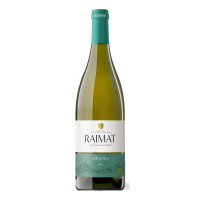Raimat
Once he had established Cava in the market, Manuel Raventos, of Codorniu fame, bought 3,200 hectares of barren lands in Lleida Province. This gave birth to Raimat, the Raventós family’s second great project. Back then, the Raimat estate was a stony wasteland on which a ramshackle castle stood. It must have been hard to imagine the land would ever yield anything.
The name Raimat derives from the combination of two Catalan words “raim” and “ma”, standing for grapes and hand, as depicted on the old castle’s coat of arms.
The building of the Aragon and Catalonia Irrigation Canal in 1910 boosted the irrigated area and made the Segrià region fertile once again. Manuel Raventós decided to open up over 100 kilometres (62 miles) of channels to water Raimat’s parched lands.
Manuel also noticed that fruit grown along the banks of the Segre river was both very tasty and highly aromatic and guessed — correctly as it turned out — that grapes grown there would produce excellent wine.
Raimat itself constitutes virtually a single area within the Costers del Segre Denomination of Origin, established in 1986. The geological and climatic features of the Raimat vineyards are unique and explain its wine’s market prestige. In addition, the lands forming part of the Costers del Segre D.O. are very varied, ranging from plains to hillsides. However, they all share a marked continental climate characterized by temperature extremes.
Showing the single result

